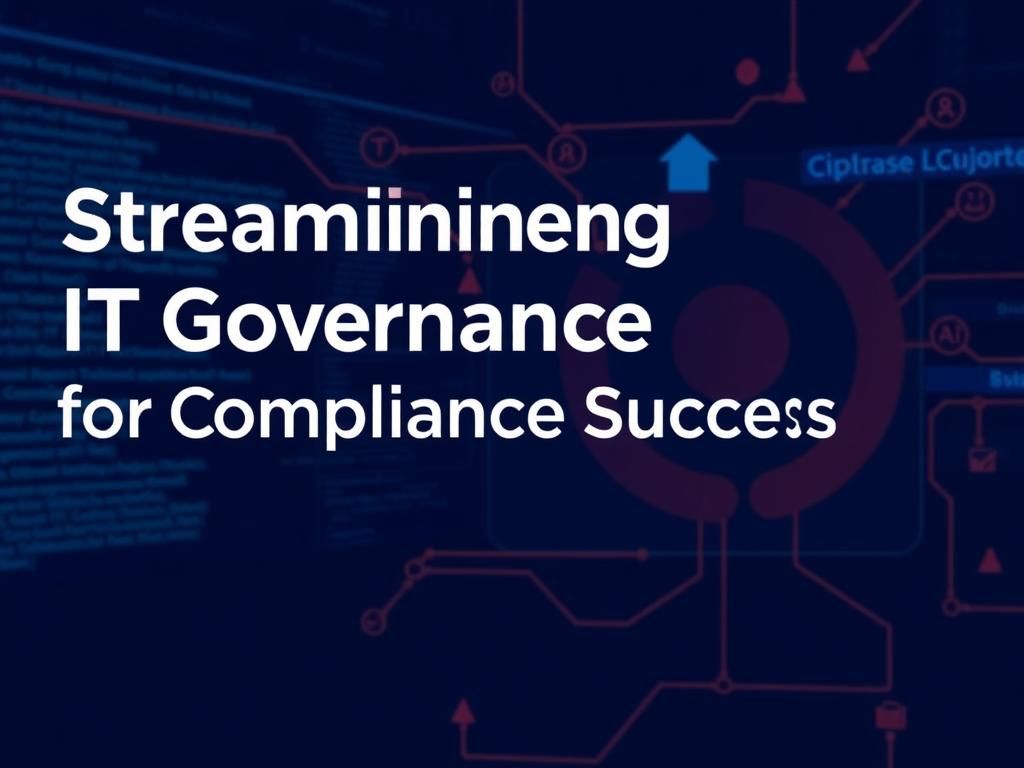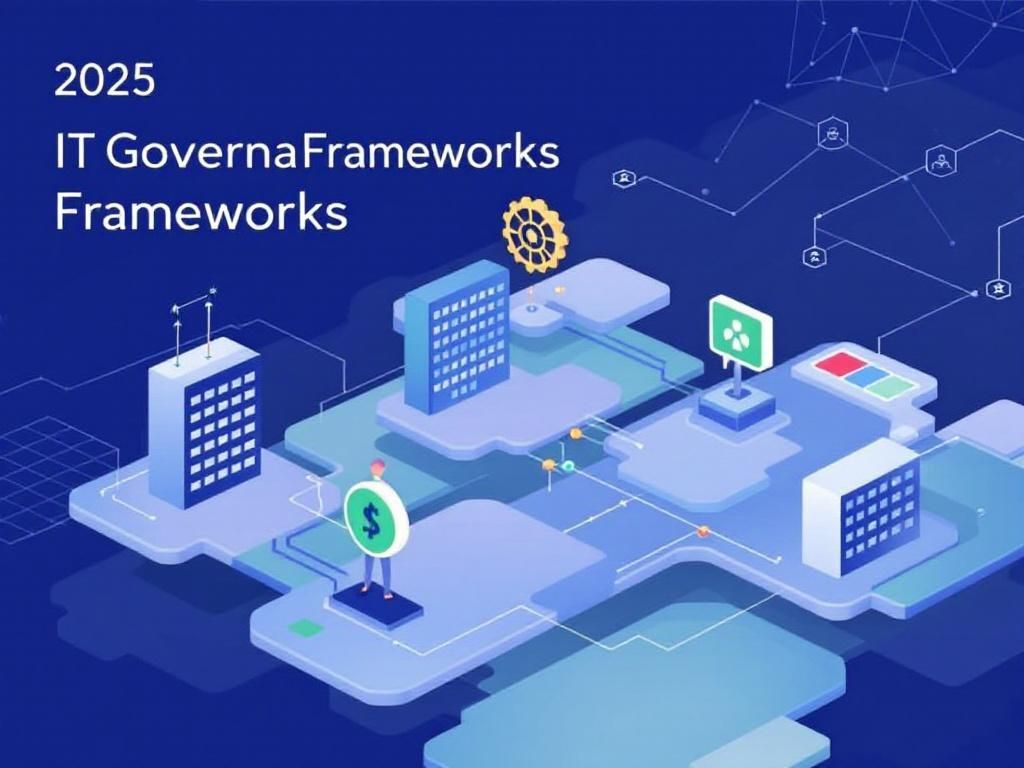Essential IT Governance Strategies for Regulated Sectors
Explore key IT governance strategies essential for compliance and efficiency in regulated sectors like finance and healthcare.

In today’s fast-paced digital landscape, IT governance has become a critical component for organizations operating in regulated sectors. With increasing scrutiny from regulators and stakeholders, businesses need to implement robust governance frameworks to ensure compliance, manage risks, and drive value through technology. This article explores the essential elements of IT governance specific to regulated sectors, outlining best practices, frameworks, and strategies that organizations can adopt to navigate the complexities of compliance and risk management.
Table of Contents
Understanding IT Governance
IT governance is a subset of corporate governance that focuses on the management and control of IT systems and resources. It ensures that IT investments support business goals, maximize value, and mitigate risks. For regulated sectors such as finance, healthcare, and telecommunications, effective IT governance is not just beneficial—it’s mandatory. Here are some core components of IT governance:
- Risk Management: Identifying, assessing, and mitigating risks associated with IT operations.
- Compliance: Ensuring adherence to laws, regulations, and standards relevant to the industry.
- Strategic Alignment: Aligning IT strategy with business objectives.
- Resource Management: Efficiently managing IT resources, including personnel, technology, and budgets.
- Performance Measurement: Evaluating IT performance against set objectives and benchmarks.
Key Frameworks for IT Governance
Various frameworks can guide organizations in establishing effective IT governance. Here are some of the most recognized frameworks relevant to regulated sectors:
1. COBIT (Control Objectives for Information and Related Technologies)
COBIT provides a comprehensive framework that assists organizations in managing IT governance and risk. It focuses on aligning IT with business goals while ensuring compliance and managing risks.
2. ITIL (Information Technology Infrastructure Library)
ITIL is a set of best practices for IT service management. It helps organizations improve service quality, reduce costs, and enhance customer satisfaction, which are crucial for compliance in regulated sectors.
3. ISO/IEC 27001
This international standard focuses on information security management systems (ISMS). Achieving ISO/IEC 27001 certification demonstrates a commitment to protecting sensitive information, making it vital for sectors like finance and healthcare.
Implementing IT Governance in Regulated Sectors
Successfully implementing IT governance requires a structured approach. Here are steps organizations can take:
Step 1: Assess Current State
Conduct a comprehensive assessment of the current IT governance framework. Identify strengths, weaknesses, and areas that require improvement.
Step 2: Define Governance Objectives
Establish clear governance objectives that align with business goals. These objectives should address compliance, risk management, and performance metrics.
Step 3: Develop Policies and Frameworks
Create or update governance policies, procedures, and frameworks based on industry standards and best practices. Ensure these documents are accessible and communicated across the organization.
Step 4: Implement and Monitor
Implement the governance framework and continuously monitor its effectiveness. Regular audits and performance evaluations are essential to ensure compliance and address any emerging risks.
Step 5: Continuous Improvement
IT governance is not a one-time effort; it requires continuous improvement. Regularly review and update the governance framework to adapt to changes in regulations, technology, and business strategies.
Challenges in IT Governance for Regulated Sectors
Organizations in regulated sectors face unique challenges when it comes to IT governance. Some of these challenges include:
- Regulatory Complexity: Navigating multiple regulations can be overwhelming, especially for global organizations.
- Resource Constraints: Limited budgets and skilled personnel can hinder the implementation of effective governance frameworks.
- Technological Changes: Rapid advancements in technology can create compliance challenges and increase risks.
- Data Security Concerns: Protecting sensitive data is essential, but it also adds complexity to governance efforts.
Best Practices for Effective IT Governance
To overcome challenges and enhance IT governance, organizations should consider the following best practices:
1. Foster a Culture of Compliance
Build a culture that prioritizes compliance and accountability at all levels. Training and awareness programs can enhance understanding among employees about the importance of IT governance.
2. Engage Stakeholders
Involve key stakeholders, including executives, IT staff, and business units, in governance discussions. Their input can provide valuable insights and drive buy-in for governance initiatives.
3. Leverage Technology Solutions
Utilize technology tools and solutions that support governance efforts, including compliance management software and risk assessment tools. Automating governance processes can lead to greater efficiency and accuracy.
4. Regularly Review and Update Policies
Governance policies should be living documents that evolve with changes in the regulatory landscape and business needs. Regular reviews can ensure ongoing relevance and effectiveness.
5. Measure and Report Performance
Establish key performance indicators (KPIs) to measure the effectiveness of the governance framework. Regular reporting to stakeholders can enhance transparency and accountability.
Conclusion
Effective IT governance is essential for organizations operating in regulated sectors. By adopting structured frameworks, best practices, and continuous improvement strategies, businesses can navigate compliance challenges, mitigate risks, and leverage technology to drive value. As the regulatory landscape evolves, organizations must remain vigilant, proactive, and adaptable in their approach to IT governance.
FAQ
What is IT governance in regulated sectors?
IT governance in regulated sectors refers to the framework that ensures IT investments support business goals while complying with legal and regulatory requirements.
Why is IT governance important for regulated industries?
IT governance is crucial for regulated industries to mitigate risks, ensure compliance, and enhance operational efficiency, which ultimately protects the organization from legal penalties.
What are the key components of IT governance?
Key components of IT governance include strategic alignment, risk management, resource management, performance measurement, and compliance.
How does IT governance impact cybersecurity in regulated sectors?
Effective IT governance enhances cybersecurity by establishing policies and controls that protect sensitive data and ensure compliance with industry regulations.
What are common challenges in implementing IT governance?
Common challenges include resistance to change, lack of stakeholder engagement, insufficient resources, and the complexity of regulatory requirements.
How can organizations improve their IT governance practices?
Organizations can improve IT governance by adopting best practices, engaging stakeholders, leveraging technology for compliance tracking, and continuously monitoring and refining their governance framework.








